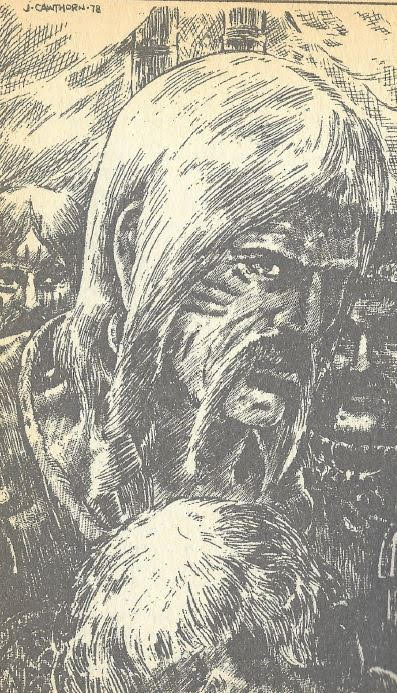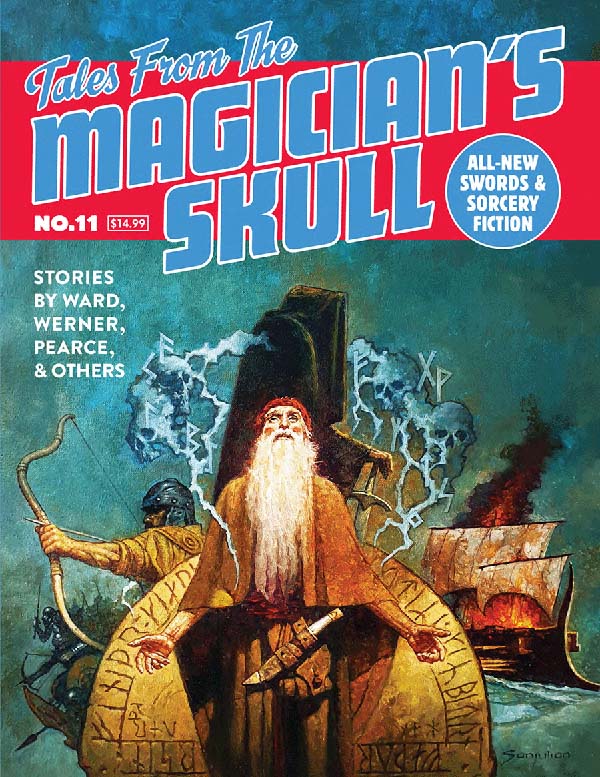A Look at Henry Treece’s The Great Captains
by Fletcher Vredenburgh
Henry Treece’s (1911-1966) literary career began as a poet and he was one of the founders of a small literary movement called the New Apocalypse. He, J.F. Hendry, and a few others saw the social-realism of British interwar poetry as mechanical and formulaic. In their mind, artists had become shackled by thoughts of economics and politics, and the rules of various artistic schools. The New Apocalypse was a call for a new, raw Romanticism. The fourth point of their manifesto reads:
“That Myth, as a personal means of reintegrating the personality, had been neglected and despised.”
When Treece turned to fiction, an endeavor that would eventually put an end to his poetry writing, he found his voice in historical fiction, in particular in legendary events and characters, and in providing a realistic basis for them. Among his most notable works is the Celtic Tetralogy. Chronologically, the first, The Golden Strangers (1956) is about the conquest of Neolithic Britain by bronze-wielding invaders. The Dark Island (1952) and Red Queen, White Queen (1958) recount the doomed resistance by British leaders Caractacus and Boudicca, respectively, to Roman rule. In The Great Captains (1956), Artos and Medrodus, descendants of the invaders from The Golden Strangers, fight a doomed battle against a new race of intruders. Together the four books recreate ancient Britain, its forests haunted by spirits, portents looming in every strange occurrence. In his novels he presents events that perhaps lie at the center of the mythic heart of Britain. Alongside Paul Kingsnorth’s Buckmaster Trilogy, it’s one of the great poetic works about Britain’s history, its land, and its people.
I discovered The Great Captains in Michael Moorcock and James Cawthorn’s valuable Fantasy: The 100 Best Books. They described it as one of the best retellings of the King Arthur legend. That was enough to get me to track it down, a feat back in the mid-nineties (its now readily available in ebook). The book floored me. It is a bleak and brutal reworking of the core Arthurian legends that still manages to hold onto much of those stories’ romantic, mythic core.
The main protagonist isn’t Arthur, here called Artos the Bear, but Medrodus (Mordred). He is the heir to Ambrosius Aurelianus, Count of Britain and the last great general of the Romano-Britons. Old and frail, Aurelianus is no longer able or capable of fighting off the Saxons who, now that the Roman legions are gone, are seizing more and more of Britain.
In search of allies, Ambrosius and his son makes their way to the court of Uther Pendragon. There they meet Uther’s son, Artos the Bear. As Treece notes in his foreword, early mentions of Arthur called him ursus horribilis. He is no high-minded, noble-souled king, but a powerful and bold warrior, through whose body elemental forces seem to course. He seizes the sword Caliburn, the symbol of Aurelianus’ authority, not from an anvil, but from an oak log:
At last the son of Uther moved towards the log and set himself firmly before it. Then he too bunched his heavy shoulders and took hold of the golden hilt, that looked so little in his hands. All men waited now, hearing their own hearts beating and the muscles of Artos groaning with the exertion of the effort. So great indeed was his trial that the hide belt about his waist suddenly burst, and some men thought for a moment that he had torn out his own bowels in his dragging.
Then he turned towards his father, laughing, his face and neck dripping with sweat, his eyes almost starting from his head, bloodshot and wild. In his right hand he whirled the great sword, free of all encumbrances.
“Hail, Uther Guletic,” he shouted. “Whose sword is it, my father?”
With that, he declares himself Count of Britain, and Medrodus, filled with rage, sees him as his sworn enemy. Artos, though, proves no simple brute, and slowly turns Medrodus, now rechristened with the Celtic name Medrawt, into his closest companion. Medrawt eventually comes to play the roles of both Mordred and Lancelot, greatest betrayer and greatest friend.
In an effort to stave off the Saxon invasion, they forge an alliance of nobles and warriors. For a time they succeed, even, if only as shadows, recreating some of the glory and power of Roman Britain. As the story of Arthur and Mordred must, it all ends in failure. In the end, the two comrades are reduced to broken old men, settling arguments that have lost any meaning and that they can barely remember.
There is one moment of the supernatural, when Medrodus is tempted, like Christ in the wilderness, but largely, the book hews to a realistic tone. What he does, to quote author M. John Harrison is “Through a stark and unmitigated realism Henry Treece conveys what it must have been like to believe in magic.” The past was a different world, with different perspectives and values. In The Great Captains, Treece has recreated a persuasive version of that time and place.
In The Great Captains, a short, blood-streaked novel, post-Roman Britain is a dark, desolate place. The great city of London has been abandoned and starvation roams the land. The civilizing force of Christianity is faltering and chaos reigns. And still, in this world, Treece makes you believe there is a place for captains of ambition and dauntlessness, a place that can give birth to the heroes whose legends still sustain us to this day.
The two James Cawthorn illustrations used in this article are from the Savoy Books edition of The Great Captains. The header image is by Henry Clarence Whaite (1828-1912).








